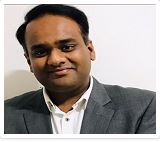Day 1 :
Keynote Forum
Y. Chergui
University M’Hamad BOUGARA, Algeria
Keynote: Zinc Oxide Properties Under Different Conditions of Pressure and Temperatures a Molecular Dynamics Simulation

Biography:
Abstract:
Keynote Forum
Trivedi Achyut
Ganpat University, India
Keynote: Structural and optical characteristic of {3-(4-(dimethylamino) phenyl)-2-phenyl-(2E) propen1-one} doped ZnO nanoparticles
Time : 10:00- 10:30

Biography:
Abstract:
Keynote Forum
Bhim P Kafle
Kathmandu University,Nepal
Keynote: Calcination Condition Dependence of Electrical Properties of Fluorine doped Tin Oxide (FTO) Transparent Thin Films
Time : 10:30- 11:00

Biography:
Abstract:
Keynote Forum
S. Emami
Keynote: Microstructural refining during friction stir welding of SAF 2205 duplex stainless steel

Biography:
Abstract:
Keynote Forum
Jeyan A. Moses
National Institute of Food Technology,India
Keynote: 3D food printing for personalized nutrition

Biography:
Abstract:
